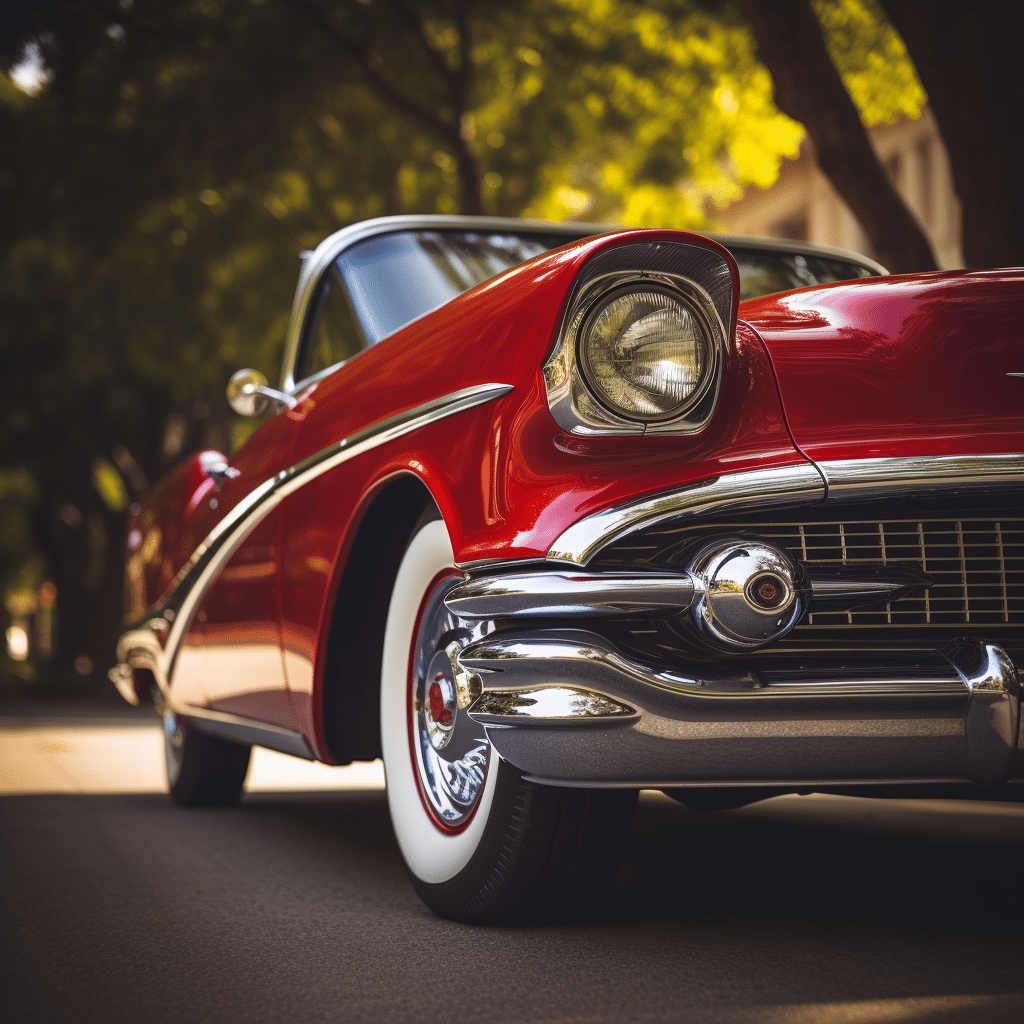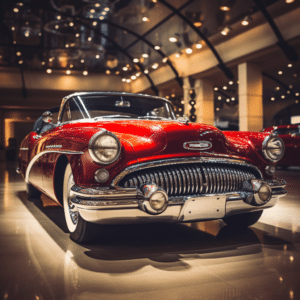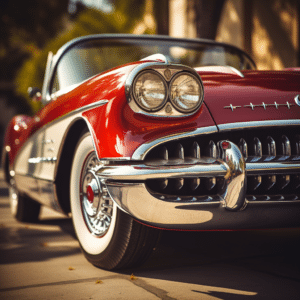
Essential Classic Car Care Guide for Timeless Preservation
Classic Car Care Guide is no mere mode of transport. It stands for elegance, craftsmanship, and history. To keep a classic car in top condition, you need to show it dedication. Here’s our guide on how to look after your special car.
Regular maintenance is essential to keep your classic car pristine. Check oil, coolant, and battery charge. Also, tire pressure matters – incorrect inflation can lead to tire damage or even accidents. Cleaning and waxing will keep the paintwork looking its best.
Keep the car original. Don’t make modifications that change design or function. Get authentic parts and check with experts who know about classic cars.
Store your car in a climate-controlled garage, protected from moisture, dust, and sun. A good cover can help if you store it outside.
James was an avid collector of classic cars. He kept his 1967 Ford Mustang Shelby GT500 in perfect condition. He went to vintage workshops and automobile exhibitions to stay up to date on maintenance.
We hope this guide helps you keep your vintage gem in shape for years to come!
The importance of regular maintenance for classic cars

Regular maintenance is key for classic cars, as they often have different mechanical systems than modern vehicles. These older parts are more prone to wear, so it’s important to stay on top of upkeep. Address issues early and follow a maintenance plan to keep your car in top shape.
Plus, the exterior paint should be washed, polished, and protected regularly. The interior should also be neat, and leather or upholstery should be free from stains or damage. Pay attention to these details to preserve the classic beauty of your car.
Don’t underestimate the impact of regular maintenance! Neglecting it can lead to higher repair costs and lower the car’s value. Stay devoted to maintenance and enjoy the experience of driving a piece of automotive history for years to come.
Start by creating a maintenance plan or consulting a professional. Don’t miss the chance to enhance your driving experience while preserving the legacy of your car.
Gathering the necessary tools and materials
John, an enthusiast for classic cars, had a dream to restore a 1967 Chevrolet Impala. He researched the model and compiled a list of materials he’d need. He invested in quality tools and materials, and consulted experts for advice. Plus, he made sure to get safety equipment such as gloves and goggles. He even got disposable bags for waste disposal. Finally, with his toolbox full, John set to work. Thanks to his dedication and the right tools, he successfully brought the car back to life.
Cleaning the exterior of the classic car
Cleaning classic cars requires focus and careful handling to keep their beauty timeless. Here’s a step-by-step guide:
- Rinse the car with clean water to remove dirt and debris.
- Use a mild soap for autos to lather up the exterior.
- Gently scrub with a soft sponge or cloth, focusing on tough grime and stains.
- Rinse off the soap completely.
- Dry the car with a lint-free towel or chamois to avoid water spots.
- Apply wax or polish to protect and enhance the glossy finish.
It’s essential to remember classic cars often have delicate paintwork and sensitive chrome accents, so avoid abrasive scrubbing tools and harsh chemicals.
Now you know how to safely clean and care for your classic car, helping it stay timeless for generations.
In 1967, at a car show in California, a rare classic car covered in dust was found beneath furniture. It was one of only five remaining models worldwide, highlighting proper care and maintenance in preserving these automotive gems.
Cleaning and treating the interior of the classic car
To keep classic car interiors timelessly beautiful and historically significant, follow these 5 steps!
- Remove all debris like dirt, dust or crumbs. Use a soft-bristle brush or vacuum with appropriate attachments to clean upholstery, carpets, dashboard and other areas.
- Tackle stains or spills with specialized cleaners or gentle soap and water solution. Test cleaning products on a small area first, and follow instructions carefully.
- Attend to details! Grime often builds up in knobs, steering wheels, buttons, and vents. Use special brushes or cotton swabs dipped in cleaning solution to clean tight crevices.
- Leather components need extra care and conditioning. Treat with quality leather conditioner to prevent cracking, fading, or drying out. Don’t use silicone-based products – they damage leather surfaces.
- Don’t forget the windows. Clean them thoroughly inside and out for a clear view while you drive your classic car.
Remember, classic cars have unique materials or features that need special attention. Take inspiration from the owner of the Jaguar E-Type found in 1969 – he kept his car’s interior pristine by meticulous care. Follow these steps to ensure your own classic car’s interior stands the test of time for future generations to appreciate!
Checking and maintaining the engine
- Inspect the engine for any signs of leaks, such as oil or coolant. These may be indications of worn-out seals or gaskets.
- Monitor oil levels and change it according to the manufacturer’s recs. Clean oil reduces friction in the engine.
- Check the air filter often and clean or replace it as needed. A blocked filter hinders engine performance.
- Look at the spark plugs and replace them when they are worn out. Faulty plugs lead to misfires, bad fuel efficiency, and choppy idling.
- Keep an eye on the cooling system. Make sure there are no leaks or blockages in the radiator or hoses.
- Flush and refill with coolant to prevent overheating.
- Note any strange noises or vibrations from the engine. These could be signs of mechanical issues that require attention.
- Also, maintain other engine components, such as belts, pulleys, and sensors.
- For best results, use high-quality synthetic oil for older vehicles. It prevents wear and tear, reduces sludge, and extends engine lifespan.
Inspecting and maintaining the electrical system
It’s vital for classic car performance and safety to inspect and maintain its electrical system. Neglecting it can lead to issues such as malfunctioning lights, dead batteries, and even vehicle breakdowns. To avoid this, below are 5 steps to inspect and maintain the electrical system:
- Visually examine every wiring connection, looking for frayed or corroded wires. Replace/repair them if found.
- Test the battery using a multimeter. A healthy battery should read 12.6 volts when the engine is off. Below this may mean a weak battery needing charging/replacement.
- Check the fuse box for blown fuses. Replace any with the same rating ones; they can cause electrical failures in your classic car.
- Examine exterior lights – head, tail, turn signals & brake lights – for proper functionality. Replace burnt-out bulbs for safety.
- Test all interior electrical components – window switches, radio controls, dashboard lights – repairing/replacing faulty parts.
Note that classic cars often have older wiring systems needing specialist knowledge for repairs/upgrades. Consult an experienced mechanic/electrician with vintage vehicle expertise.
By following these guidelines for regularly inspecting and maintaining the electrical system, you’ll avoid breakdowns and costly repairs. Plus, it ensures reliability & enhances vehicle value & enjoyment. Take the necessary steps now. Don’t let negligence compromise performance or leave you stranded. Embrace your responsibilities & keep the heart of your vintage ride beating with confidence.
Preserving the classic car’s paint and chrome
- Regular cleaning: Wash the car with a mild soap and water solution. Remove dirt and debris which can cause scratches.
- Waxing: Apply a high-quality wax to protect the paint from oxidation and UV damage.
- Rust prevention: Check for any rust and treat it quickly with a rust inhibitor or primer.
- Park sheltered: Park your classic car in a covered area to guard it from bad weather, like rain, snow, and sunlight.
- Cover when not used: Put a breathable car cover on when not driving, to stop dust accumulating.
- Gentle handling: Be careful when touching or leaning on the car’s surface – pressure can cause scratches or dents.
- Clear coat application or ceramic coating can offer extra protection. Also, don’t park near areas with heavy traffic or industries that emit pollutants.
- Non-abrasive cleaning products made for vintage cars can help maintain the original finish without causing harm or discoloration. Remember to follow the manufacturer’s instructions when using these products.
Back in the ’60s, automotive technology brought about acrylic lacquer paint, supplying a glossy and durable finish. This change made people focus more on preserving their classic car’s paint. Appreciation of these historical vehicles continues, so restorers and owners take meticulous care of their classic cars’ paint and chrome.
Storing and protecting the classic car

Classic cars are treasured by car lovers. To keep them safe and secure, there are certain things to remember. Let’s look at some of them:
| Aspect | Details |
|---|---|
| Garage | Get an insulated and ventilated garage. Make sure it’s clean and dry, with no pests. |
| Cover | Use a soft, breathable cover that protects from dust and sunlight. Avoid plastic covers. |
| Battery | Disconnect the battery or use a maintenance charger. If it’ll be idle a long time, remove it. |
| Fluids | Change all fluids before storage. Oil, coolant, brake fluid, and fuel stabilizers to stop corrosion. |
To make sure your car is taken care of, here are extra steps:
- Lift the car off the tires – use jack stands or tire cradles.
- Regularly inspect the car.
- Clean and wax it prior to storage.
These tips come from experts who know classic cars. Fun fact: According to ClassicCars.com, classic cars went up 122% in value over 10 years. That makes them both a passion and an investment.
Conclusion
To wrap up, caring for a classic car is essential to keep it going and secure its worth. By adhering to the maintenance tips mentioned above, you can keep your classic car in perfect shape for years.
Washing and waxing are important, not only for looks but also to protect the paintwork from pollutants and UV rays. Also vital: keeping the interior clean by conditioning the leather/vinyl seats, to avoid cracking and fading.
Regular servicing and oil changes will keep the engine running smoothly. Listen out for any unusual noises/vibrations and address them quickly – this will save you money in the long run.
During periods of inactivity, store your classic car properly. Look for a dry, clean area with decent ventilation and use a high-quality car cover. This will shield your car from rust, corrosion and other damage.
Lastly, don’t forget insurance! To protect your investment, go for complete coverage tailored to classic cars. This way, if something bad should happen, such as theft or accidental damage, you’ll have peace of mind.
Frequently Asked Questions
1. How often should I wash my classic car?
It is recommended to wash your classic car at least once a month to remove dirt, dust, and grime that can damage the paint and body. However, if you drive your car frequently or live in an area with harsh weather conditions, you may need to wash it more often.
2. How should I store my classic car?
When storing a classic car, it is crucial to keep it in a dry, well-ventilated area away from direct sunlight. Ideally, you should store it in a garage or a dedicated storage facility. Make sure to cover the car with a breathable car cover to protect it from dust and scratches.
3. How often should I wax my classic car?
Waxing your classic car every three to six months helps preserve the paint and protects it from UV rays. Use a high-quality carnauba or synthetic wax to provide a deep shine and long-lasting protection. Always apply wax in a cool, shaded area to avoid streaking and uneven application.
4. How do I maintain the leather interior of my classic car?
To maintain the leather interior of your classic car, regularly clean it with a mild leather cleaner and a soft cloth. Avoid using harsh chemicals or abrasive materials that can damage the leather. Apply a leather conditioner every few months to keep the leather soft, supple, and protected from cracking.
5. How can I prevent rust on my classic car?
To prevent rust on your classic car, keep it clean and dry at all times. Regularly inspect the body for any signs of rust or corrosion and promptly address them. Applying a rust inhibitor or protective coating can also help prevent rust formation. Additionally, avoid driving your classic car on salted roads during winter months.
6. Do I need special insurance for my classic car?
Yes, it is highly recommended to obtain special insurance for your classic car. Regular auto insurance may not provide adequate coverage for the unique needs of classic cars. Look for specialized classic car insurance that offers agreed value coverage, lower premiums, and flexible usage terms specifically tailored for classic cars.
